Your Guide to the 6 Most Common Types of Depression Medications
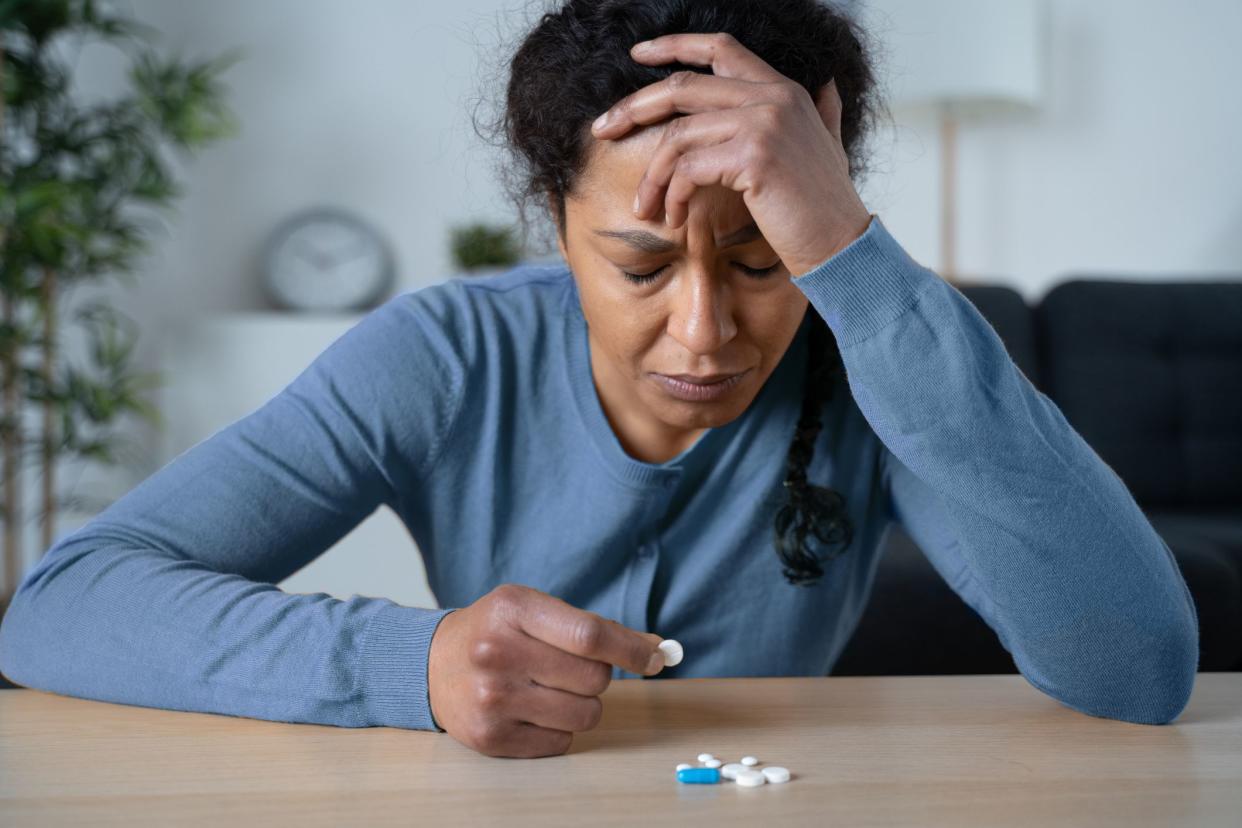
Depression Medications: A Complete Guide
Maybe you’re neck-deep in a two-week funk you just can’t seem to shake, or perhaps you’ve been struggling with severe depression for years. No matter how long it lasts, depression can feel downright isolating when you’re going through it. But no matter how lonely you feel, you’re not alone.
The reality is, roughly 21 million adults in the U.S. experienced a major depressive episode in 2021. There’s good news, though. Depression is highly treatable.
Along with mental health resources like talk therapy and support groups, medication for depression — also known as antidepressants — can be an extremely effective tool for improving your symptoms as well as your overall quality of life.
With the guidance of a healthcare provider, you can learn what your options are and choose the best one for your unique needs.
There’s no “best” depression medication for everyone — and you don’t necessarily need to have depression to benefit from medication. In fact, antidepressants are often used as a first-line treatment for anxiety disorders. Some medications share similar effects, while others work differently to target symptoms.
So it’s only natural to wonder, How do I know what medication is best for me?
It’s entirely dependent on the individual (and is something your provider can help you determine). Still, it’s helpful to have a general understanding of what the most common medications are for treating depression, how they work and what side effects of antidepressants you should be aware of.
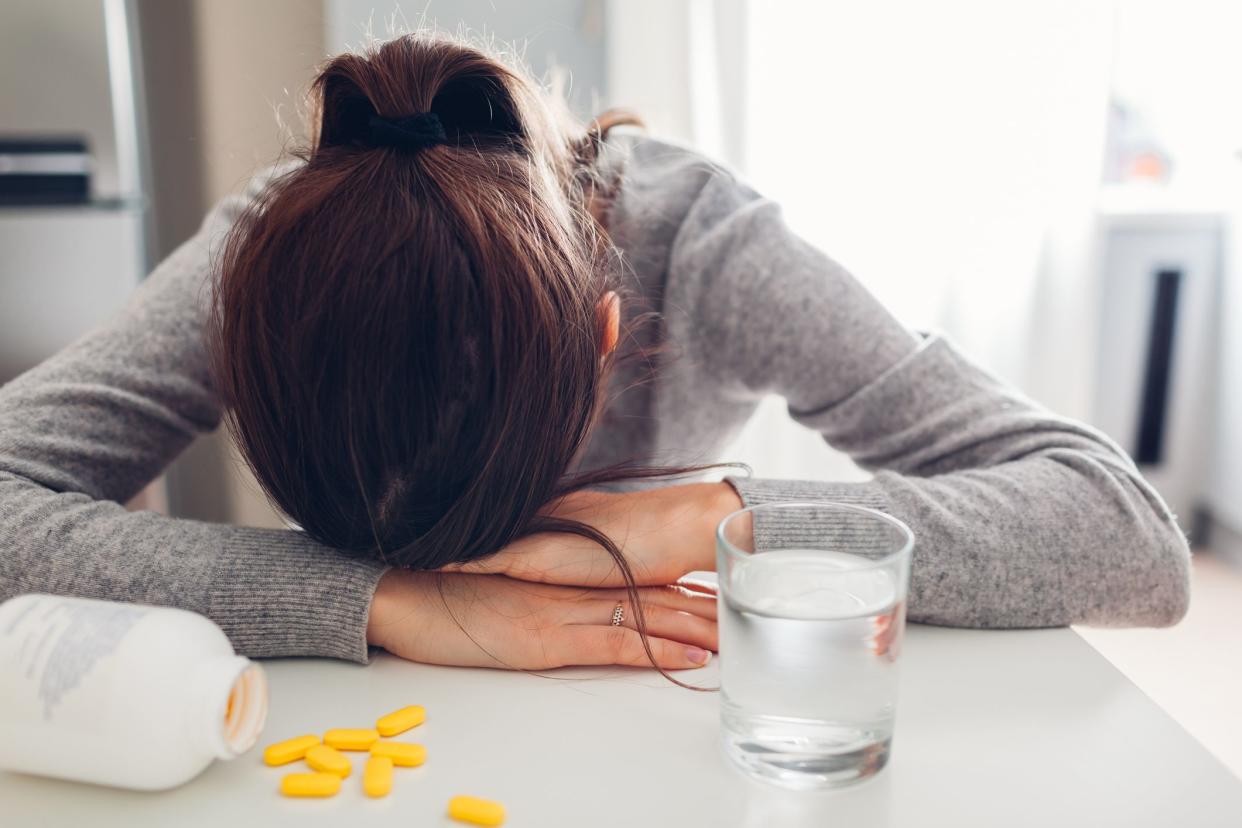
Medications for Depression: An Overview
Antidepressants are a class of medications used very commonly to treat depression. In fact, nearly 13 percent of people 12 and over in the U.S. used antidepressants in 2017, according to the American Psychological Association.
Symptoms of depression include feeling sad, a sense of hopelessness, losing interest in things you once enjoyed, trouble sleeping and weight gain or loss. Some people experience short-term depression following a specific life event (like losing a job or the death of a loved one) and for others, the mental health condition lasts years.
But no matter the circumstances, antidepressants can make a big difference if you’re struggling. They work to regulate your mood and reduce symptoms by targeting certain neurotransmitters (aka brain chemicals) like serotonin, dopamine and norepinephrine.
The most common types of antidepressants include:
Selective serotonin reuptake inhibitors (SSRIs)
Serotonin–norepinephrine reuptake inhibitors (SNRIs)
Tricyclic antidepressants (TCAs)
Dopamine reuptake inhibitors (DRIs) and norepinephrine–dopamine reuptake inhibitors (NDRIs)
Monoamine oxidase inhibitors (MAOIs)
Tetracyclic antidepressants (TeCAs)
The above list may (understandably) seem a little overwhelming, but don’t fret. We’ll break down how each kind of antidepressant works and the most common prescription medications associated with each one — some of which may even sound familiar.
(Related: How To Get Antidepressants)

Selective Serotonin Reuptake Inhibitors (SSRIs)
Selective serotonin reuptake inhibitors work by boosting your serotonin levels. Serotonin, a brain messenger that you might know as the "happy hormone" (along with dopamine and others), helps regulate your mood as well as other functions like memory, social behavior and sleep. SSRIs are part of a newer class of medications and tend to be better tolerated than the older TCAs or MAOIs.
In addition to different types of depression, like major depressive disorder (MDD), SSRIs are prescribed by healthcare providers to treat a wide range of other psychiatric disorders. This includes post-traumatic stress disorder (PTSD), social anxiety disorder and obsessive-compulsive disorder (OCD).
The most common SSRIs are:
Fluoxetine (Prozac)
Sertraline (Zoloft)
Escitalopram (Lexapro)
Paroxetine (Paxil)
Fluvoxamine (Luvox or Faverin)
Citalopram (Celexa or Cipramil)

Fluoxetine
Fluoxetine, sold under the name (Prozac), is one of the most popular antidepressants prescribed in the U.S. While commonly prescribed to treat depression, it’s also used for treating panic disorder, OCD, premenstrual dysphoric disorder and eating disorders like bulimia.
For depression, the starting dose for fluoxetine is usually 20 milligrams per day. Research shows it typically takes four to six weeks to fully feel its impact.
Fluoxetine has common side effects, like many antidepressants, and some people who take this drug have trouble concentrating. Depending on how it makes you feel, it may be best to opt out of activities like driving when first taking fluoxetine.

Sertraline
Sertraline, sold under the name Zoloft, is similar to fluoxetine in that it’s also an SSRI used to treat depression and other mental health conditions like social anxiety disorder, panic disorder, OCD, PTSD and premenstrual dysphoric disorder.
Per the U.S. Food and Drug Administration (FDA), sertraline is approved to be taken at 25 to 200 milligrams per day. Like other SSRIs, the dosage may change depending on how you feel and what your symptoms are.
Similarly, when it comes to treating depression, sertraline, like other antidepressants, can take four to eight weeks — although sometimes longer — in order to fully feel its effects.
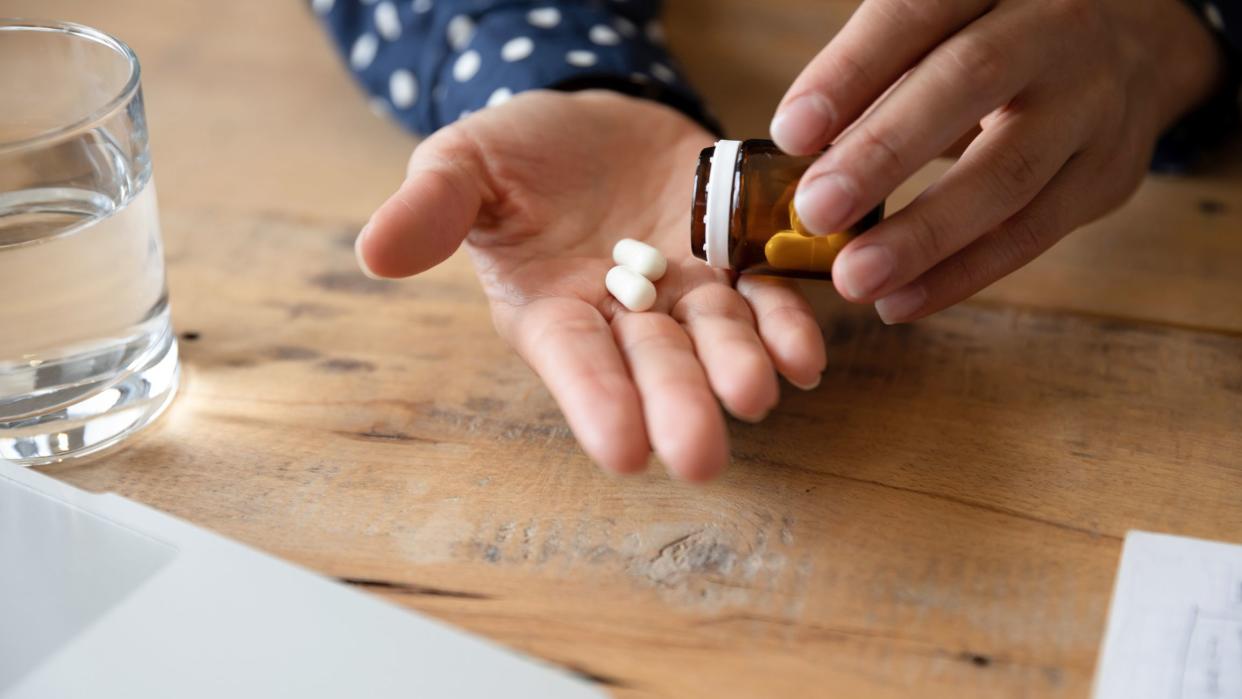
Escitalopram
Escitalopram, sold under the name Lexapro, is most commonly used to treat depression and generalized anxiety disorder (GAD).
According to a 2018 review, escitalopram is one of the most effective and tolerable antidepressants on the market. Beyond depression and anxiety, it’s also occasionally prescribed off-label to help treat symptoms of premenstrual dysphoric disorder syndrome.
Like many SSRIs, escitalopram is meant for daily use. It’s usually prescribed at 10 milligrams with a maximum recommended dosage of 20 milligrams. You may be unsurprised to learn that it takes anywhere from four to eight weeks for escitalopram to do everything it’s capable of, although most people start to notice initial positive effects of antidepressants in about two weeks.
Escitalopram and SSRIs have lower toxicity profiles than older antidepressants (we’ll get to these below). But they’ve been linked to more negative side effects, such as insomnia, arousal dysfunction, increased sweating and nausea.

Paroxetine
Paroxetine, sold under the name Paxil, isn’t prescribed as often as fluoxetine, sertraline or escitalopram. But it’s still one of the most widely prescribed antidepressants in the country.
Not only is paroxetine used to treat depression, social anxiety disorder, premenstrual dysphoric disorder, panic disorder and obsessive-compulsive disorder, but it can also be used in low doses to treat menopausal symptoms like hot flashes.
When it comes to dosages for depression, providers typically start patients at 20 milligrams a day, with a maximum dosage of 50 milligrams. IParoxetine is intended to be used daily, although, like most SSRIs, it can take as many as eight weeks to fully work.
As far as side effects go, there’s a range. But one 2016 review suggests that paroxetine may be one of the least safe antidepressants. Of course, as with any medication, consult with your healthcare provider about any concerns you have.
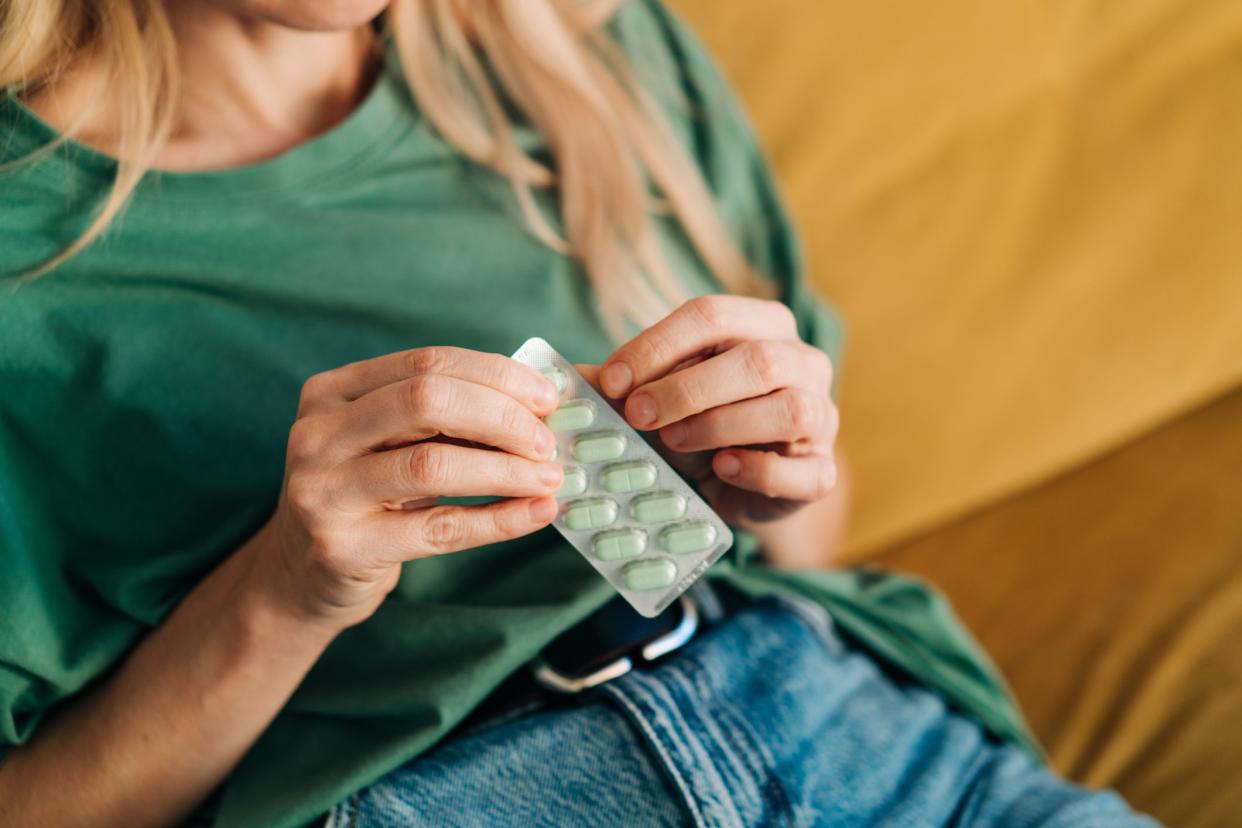
Fluvoxamine
Fluvoxamine, sold under the name Luvox or Faverin, is an SSRI commonly used to treat OCD in adults and children 8 and older. It’s also sometimes prescribed off-label for major depressive disorder, social anxiety disorder, PTSD, panic disorder and eating disorders such as bulimia nervosa and binge-eating disorder.
It’s typically recommended that adults start with 50 milligrams at bedtime, with increases of 50 milligrams every four to seven days as tolerated — but not to exceed 300 milligrams per day.
Fluvoxamine has similar side effects to other SSRIs, and it can take anywhere from six to eight weeks to feel its maximum effects. There are more serious side effects, like low sodium blood levels and an increased risk of bleeding, however rare.
It’s also important to note that fluvoxamine shouldn’t be taken with or within six weeks of taking monoamine oxidase inhibitors (MAOIs), which we’ll dive into soon.
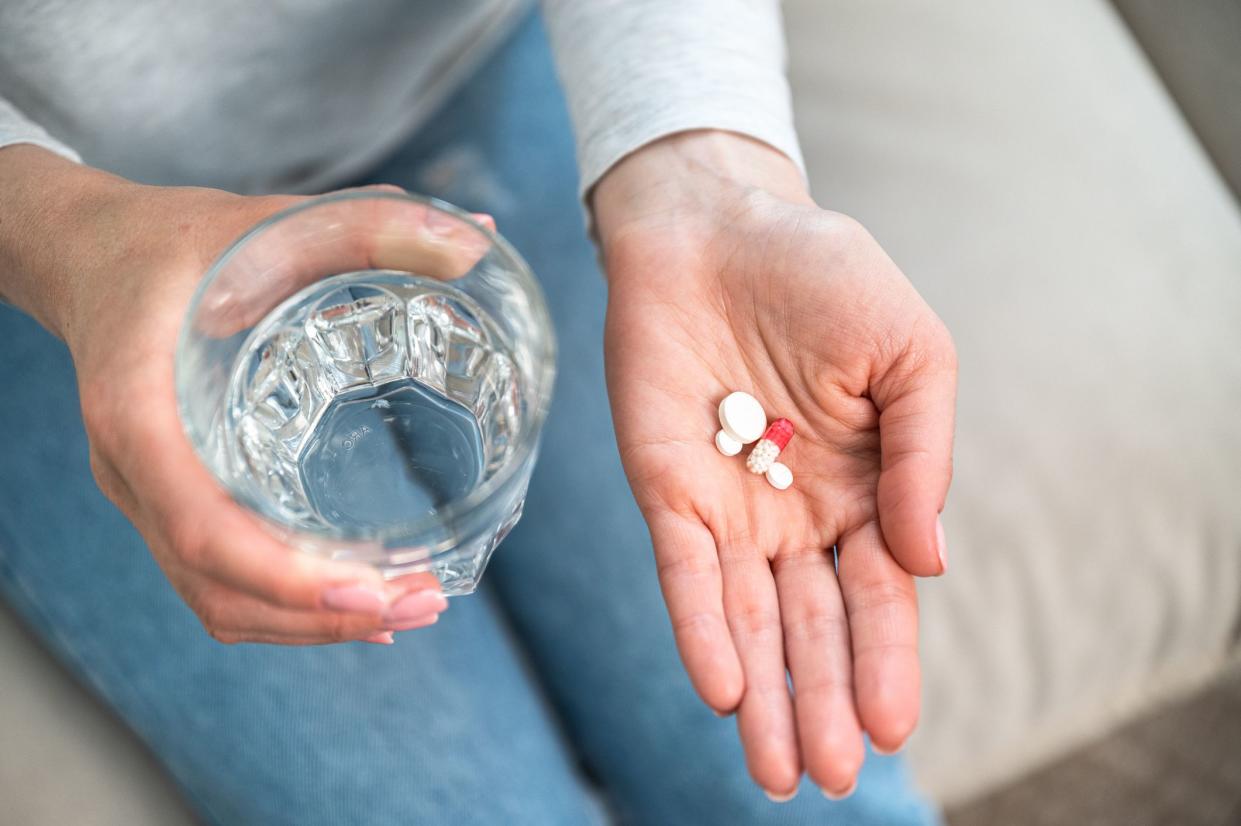
Citalopram
Citalopram, sold under the name Celexa or Cipramil, is an SSRI designed to treat both mild and severe depression. Additionally, it can also be used to treat obsessive-compulsive disorder, eating disorders, premenstrual dysphoric disorder, alcoholism, panic attacks (and panic disorder), social anxiety disorder, post-traumatic stress disorder and even some neuropathic pain related to diabetes.
Healthcare providers tend to start patients at a 20-milligram dose once a day, potentially increasing to 40 milligrams per day as the maximum dose. A larger dose increases the risk of adverse side effects, like abnormal bleeding, serotonin syndrome and heart issues.
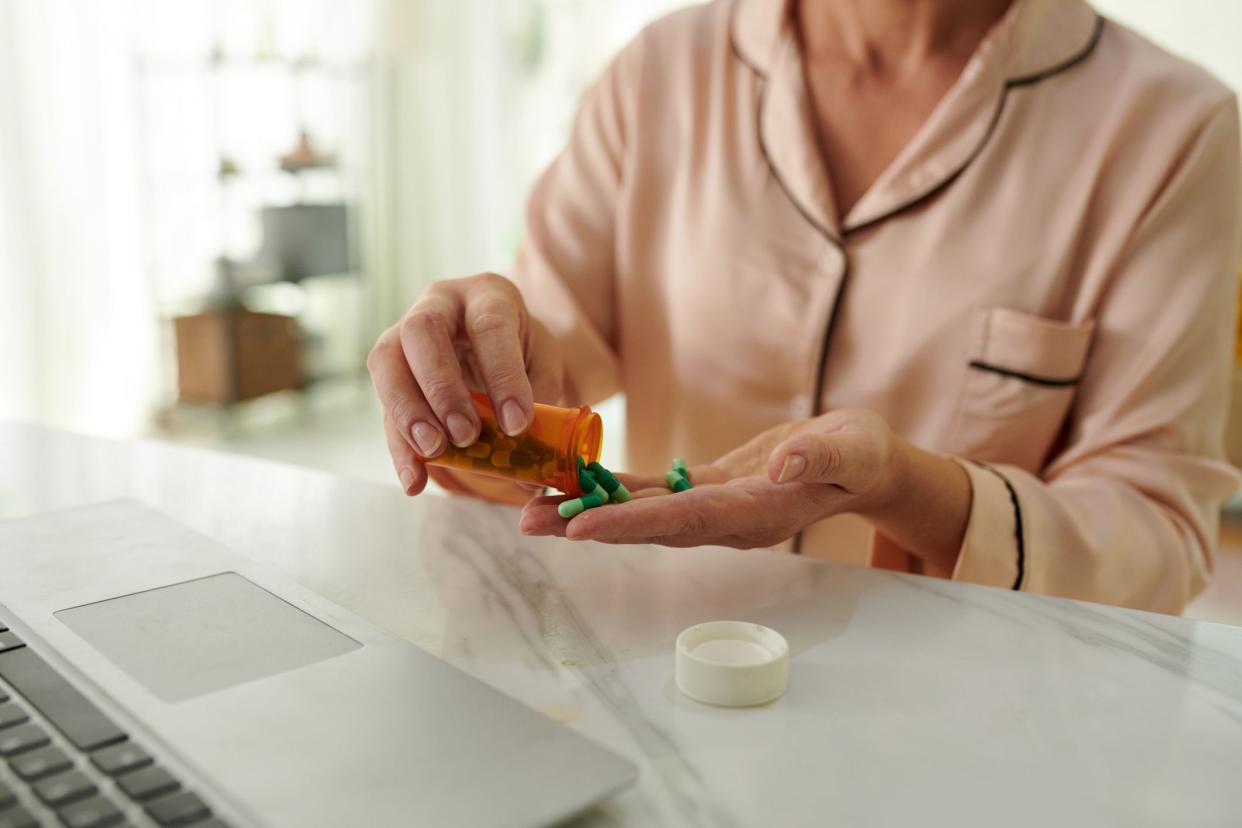
Serotonin–Norepinephrine Reuptake Inhibitors (SNRIs)
Serotonin-norepinephrine reuptake inhibitors are very similar to SSRIs in that they’re also responsible for increasing serotonin levels. However, they double up by targeting a neurotransmitter called norepinephrine.
Norepinephrine helps regulate your sleep-wake cycle, stimulates your cardiovascular system and is involved in your body’s fight-or-flight response, among other tasks. Low norepinephrine is linked to symptoms like lethargy and concentration issues.
By simultaneously targeting serotonin and norepinephrine, SNRIs can be effective in treating both depression and anxiety, particularly if SSRIs as a treatment hasn’t already been successful. However, in most cases, SSRIs are just as effective as SNRIs.
Some of the most common SNRIs are:
Duloxetine (Cymbalta)
Venlafaxine (Effexor)
Levomilnacipran (Fetzima)
Desvenlafaxine (Pristiq and Khedezla)

Duloxetine
Duloxetine, sold under the name Cymbalta, is an SNRI that helps manage symptoms of MDD, GAD, diabetic peripheral neuropathy, fibromyalgia and chronic musculoskeletal pain. It’s also prescribed off-label for stress urinary incontinence and chemotherapy-induced peripheral neuropathy.
Duloxetine is one of the most commonly used prescription medications in the U.S. Patients with depression are usually prescribed 40 to 60 milligrams per day, with a potential increase of up to 120 milligrams daily.
While most side effects tend to be mild, there’s always a risk of more serious ones.
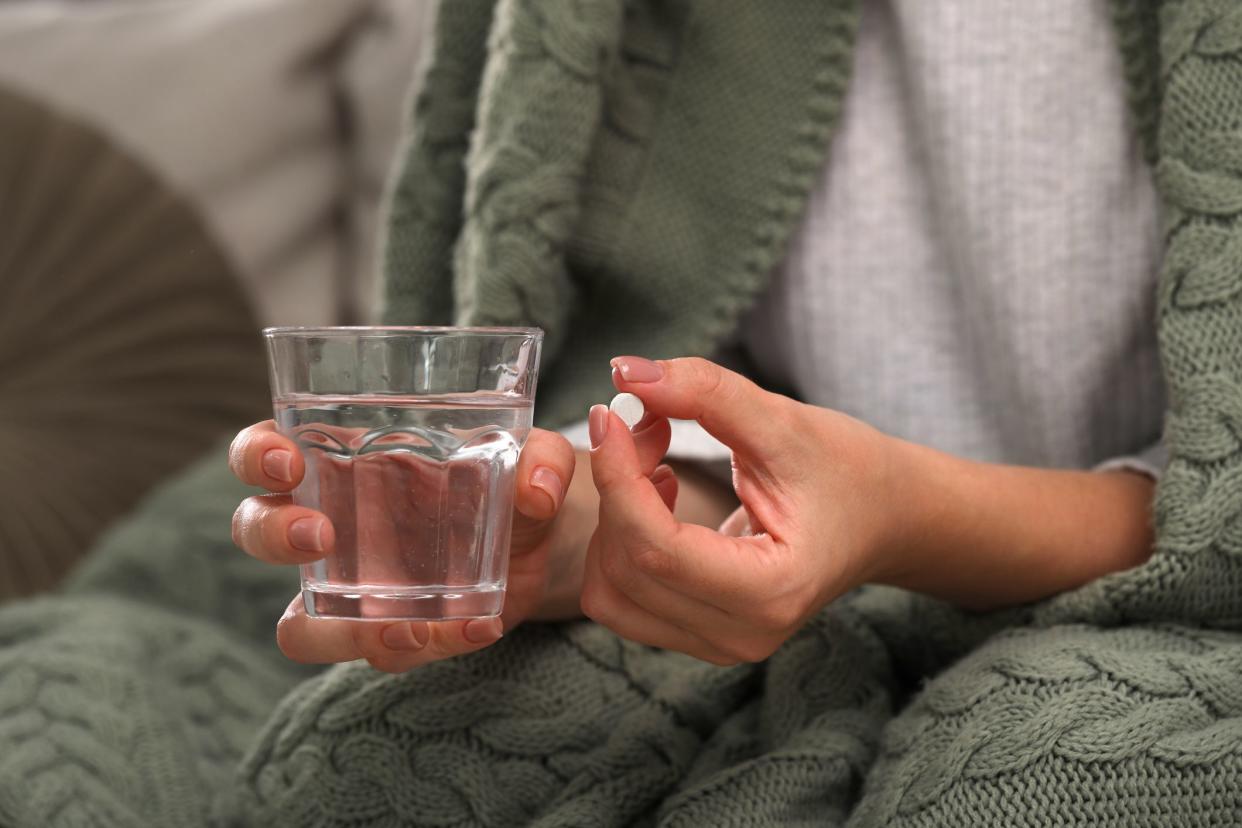
Venlafaxine
Venlafaxine, sold under the name Effexor, is another common SNRI prescribed to those with depression, social anxiety and cataplexy, which can cause sudden muscle weakness. When prescribed off-label, venlafaxine can also be used to treat neuropathic pain and certain menopause symptoms.
For targeting depression, four six to eight weeks is the typical time it takes for venlafaxine to reach its full effectbegin to work. The starting dose is usually 75 milligrams, but it can be increased to a maximum safe dose of 225 milligrams daily.
Similar to SNRIs, venlafaxine can come with a mixed bag of side effects, although the most common ones tend to be temporary and on the mild side.
While they work similarly, the biggest difference between Cymbalta and Effexor is how they’re administered when it comes to treating psychiatric conditions.
Cymbalta is primarily used to treat GAD and MDD, but it can also help with neuropathic pain. Effexor, on the other hand, is most known for treating major depression, social anxiety disorder, certain types of neuropathy, hot flashes, migraines and PTSD.

Levomilnacipran
Levomilnacipran, sold under the name Fetzima, is a newer SNRI antidepressant. It got an FDA seal of approval in 2009 as an approved treatment for MDD, but it’s not typically prescribed to treat anxiety or chronic pain conditions.
Since it’s still relatively new, levomilnacipran may not be as commonly prescribed as duloxetine or older antidepressants. It tends to be prescribed at a dosage of 40 to 120 milligrams per day.

Desvenlafaxine
Desvenlafaxine, sold under the names Pristiq and Khedezla, is an SNRI used primarily to treat major depressive disorder in adults. It can also be prescribed off-label to treat hot flashes for women going through menopause.
Research shows that although the FDA hasn’t approved desvenlafaxine for this age group, it can potentially treat MDD among treatment-resistant teenagers.
The recommended starting dose is 50 milligrams, with the maximum dose of desvenlafaxine being 400 milligrams. It may interfere with other medications and shouldn’t be taken with (or within two weeks of taking) MAOIs.
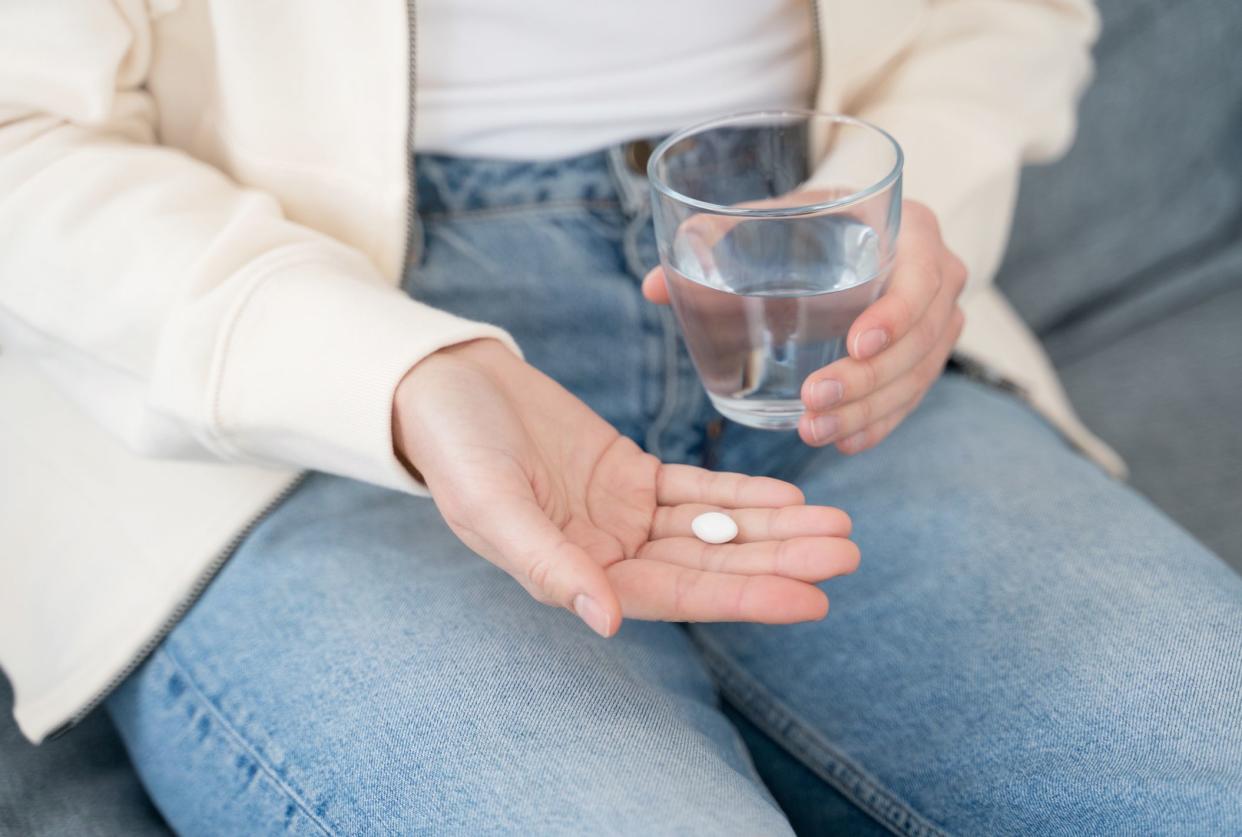
Milnacipran
Milnacipran, sold under the name Savella, is an outlier in this group of medications. While it’s an SNRI, it hasn’t been approved by the FDA to treat depression.
Instead, it’s used to treat fibromyalgia, a chronic condition involving muscle and tissue pain in the body. Milnacipran is typically taken twice a day.

Tricyclic Antidepressants (TCAs)
Tricyclic antidepressants are a type of antidepressant introduced in the 20th century. They’re some of the first prescription medications to be approved by the FDA for use. Some people still use TCAs, though generally not for depression. These days, it’s typically prescribed as a sleeping pill or for neuropathic pain. However, if you’re experiencing depression and SSRIs or SNRIs aren’t effective, your healthcare provider might suggest TCAs as an alternative.
Common TCA depression medications include:
Amitriptyline (Elavil)
Doxepin (Silenor)
Amoxapine
Clomipramine
Desipramine
Imipramine
Nortriptyline
Protriptyline
Trimipramine
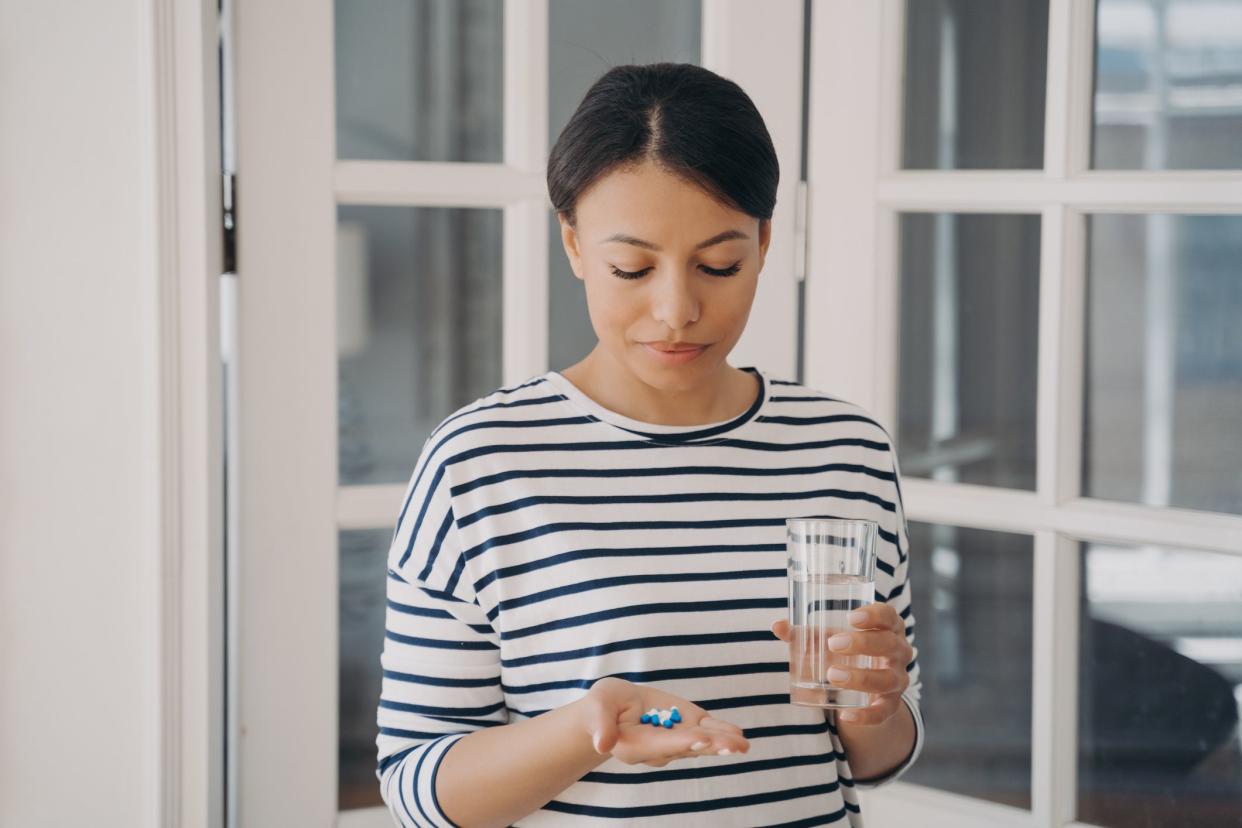
Amitriptyline
Amitriptyline, sold under the name Elavil, is a tricyclic antidepressant used to treat depression, especially when other medications aren’t effective. It’s also used to treat certain forms of chronic and neuropathic pain.
Amitriptyline tends to be a more alternative prescription treatment, but it’s still prescribed to millions of people each year. Currently, amitriptyline is a generic drug that isn’t available as a brand-name medication.
Similar to other TCAs, amitriptyline is more likely to cause certain side effects than newer medications. A study by JAMA Psychiatry found that amitriptyline is one of the depression medications most commonly linked to weight gain.
Due to its side effects, amitriptyline isn’t commonly used as a first-line treatment for depression.
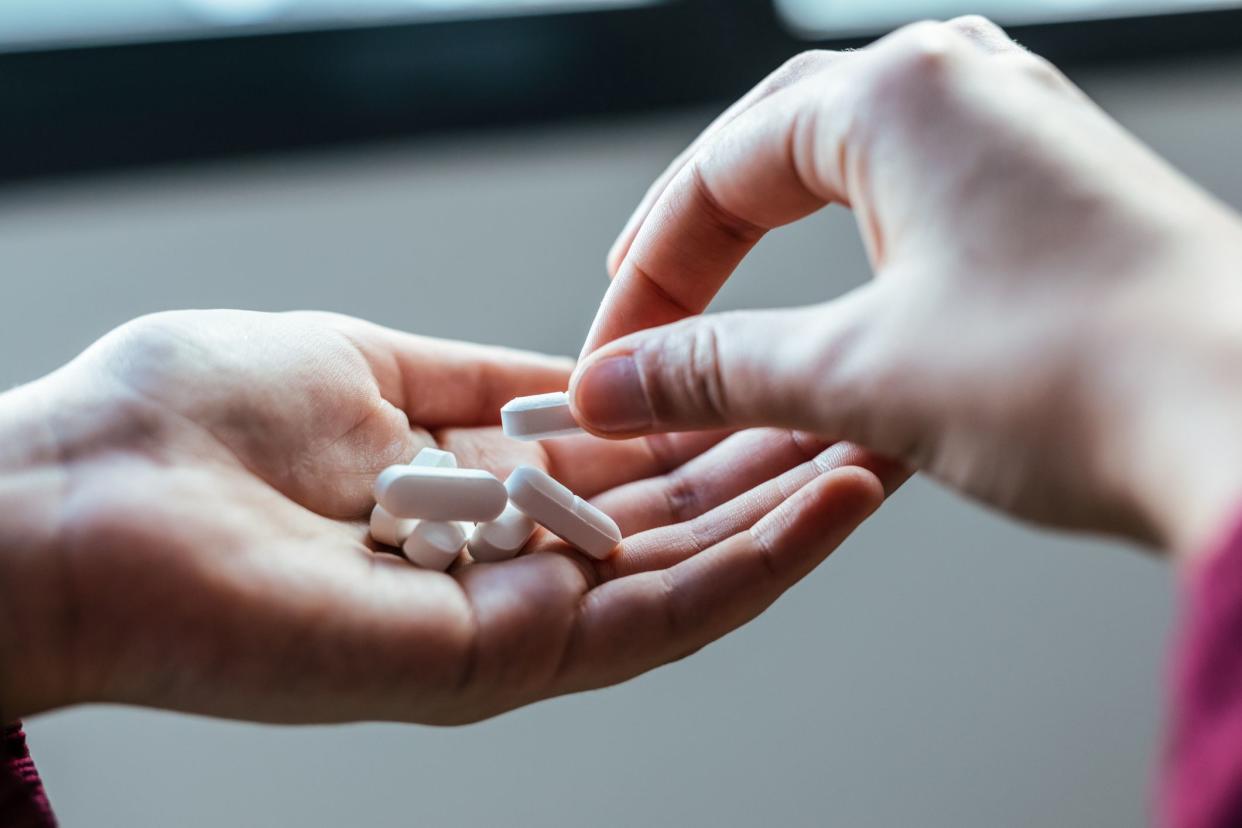
Doxepin
Another well-known TCA is doxepin, sold under the name Silenor. Doxepin is rarely used to treat depression and anxiety disorders. It can also be used to treat skin conditions like hives, atopic dermatitis and other conditions associated with skin pruritus (when used topically).
It’s also commonly used as a low-dose sleeping pill to help with acute and chronic insomnia.
Formally introduced in the 1960s, like other TCAs, doxepin is an older medication that isn’t typically a first choice in treating depression.
Other TCAs are out there that people still use. Although due to their risk of side effects, they’re rarely used for depression and anxiety.
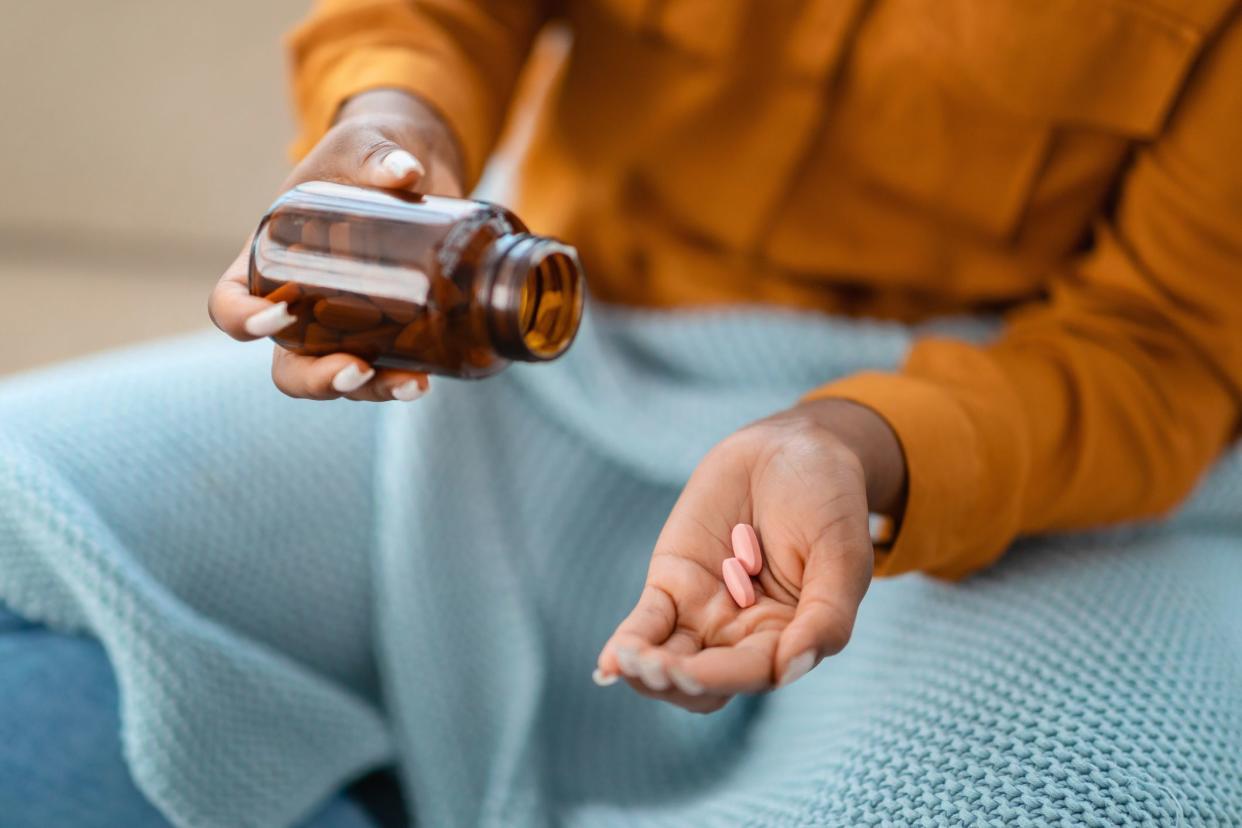
Dopamine Reuptake Inhibitors (DRIs) and Norepinephrine–Dopamine Reuptake Inhibitor (NDRIs)
At present, only one norepinephrine-dopamine reuptake inhibitor is approved by the FDA to treat depression: bupropion (Wellbutrin). It boosts the concentration of norepinephrine and dopamine neurotransmitters throughout the brain.
NDRIs are a newer class of antidepressants and tend to have fewer side effects than other antidepressants.
DRIs tend to treat conditions like narcolepsy, ADHD (attention-deficit/hyperactivity disorder) and lethargy. They can also be used as a smoking cessation treatment and might be helpful in treating obesity and binge-eating disorder.

Monoamine Oxidase Inhibitors (MAOIs)
Making their debut in the 1950s, monoamine oxidase inhibitors are a type of antidepressant primarily prescribed in the past to treat major depressive disorder, social phobia, panic disorder and nervous system disorders.
Though use has decreased over the past few decades as newer antidepressants have been swapped in, MAOIs are still prescribed in some cases. For example, in rare cases your healthcare provider might recommend an MAOIs if you’ve been diagnosed with a depressive disorder but aren’t feeling better despite using an SSRI plus other treatments.
MAOIs can be an effective medication option, but they’re very likely to cause severe side effects that could affect your daily life.
(Related: Wellbutrin vs Adderall: Differences and Similarities)

List of Monoamine Oxidase Inhibitors (MAOIs)
There’s no shortage of MAOI medications, including many older ones that are no longer prescribed. MAOIs approved by the FDA to treat depression include:
Isocarboxazid (Marplan)
Phenelzine (Nardil)
Selegiline (Emsam)
Tranylcypromine (Parnate)
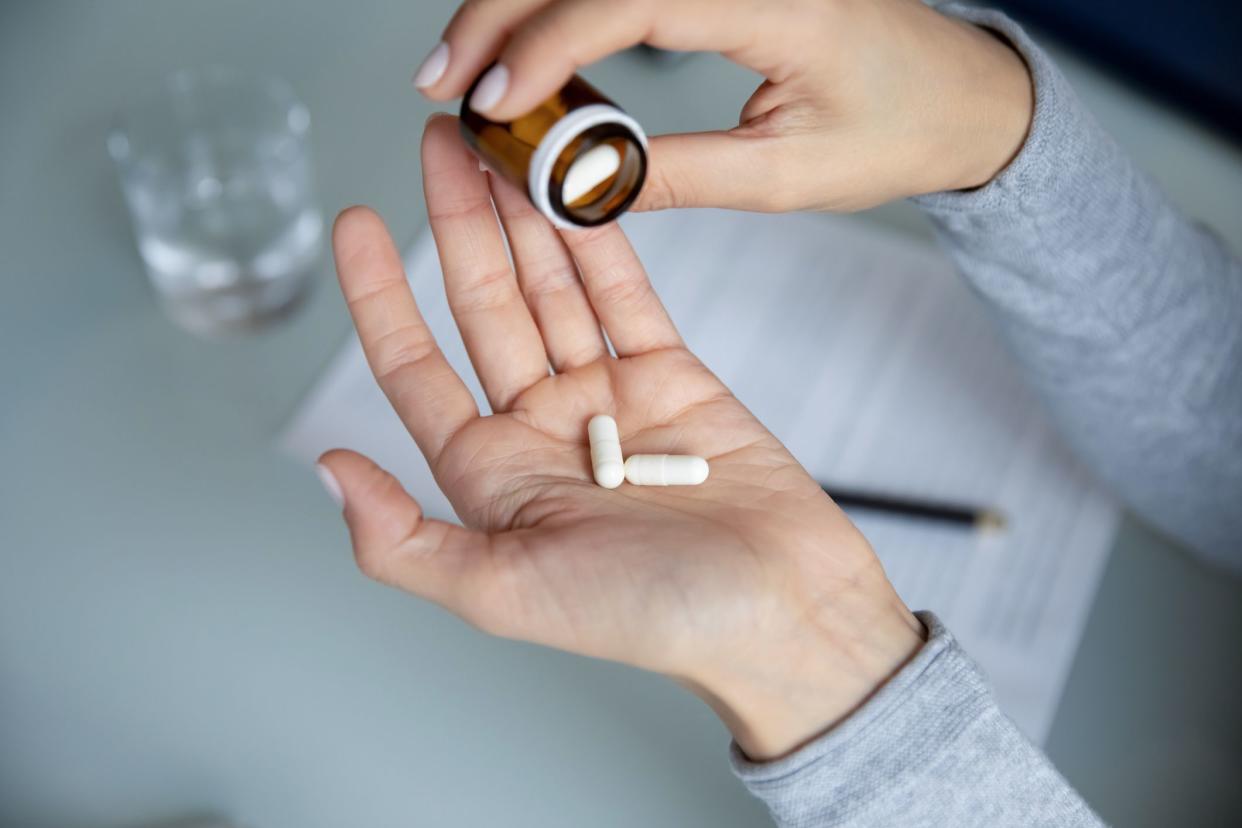
Tetracyclic Antidepressants (TeCAs)
As you might’ve guessed, tetracyclic antidepressants are yet another older class of antidepressants. Entering the fold in the 1970s, they not only sound similar to tricyclic antidepressants but also act similarly.
Like TCAs, TeCAs were once widely prescribed, but their demand has slowed down. They’re still occasionally used to treat cases of depression that don’t respond to other medications.
There are various TeCAs to choose from, but mirtazapine (Remeron) wins the “Most Popular” superlative. In addition to depression, certain TeCAs may also help treat anxiety disorders, panic disorder, PTSD, OCD, schizophrenia and insomnia.

Depression Medications: Final Thoughts
Depression can be debilitating, but antidepressants can give you the life jacket you didn’t know you needed. Don’t wait until you feel like you’re underwater before seeking help.
With guidance from a healthcare professional, be it your primary care provider or a psychiatrist, you can find a treatment plan best suited to your needs.
In the meantime, remember:
Depression looks different to everyone — and so does medication. There’s no one-size-fits-all when it comes to depression, and the same applies to antidepressants. What works for your friend, teacher or mailman may not work for you — and that’s okay. Everyone’s brain is different, so it makes sense that there’s no “magic pill” everyone can use.
Opening up helps. Whether it’s reaching out to a loved one, trying talk therapy or joining anonymous support groups, opening up about your struggles can make you feel less alone and help you cope. And if you don’t want to get out of bed, online therapy is an excellent strategy that requires minimal physical effort.
Practice self-care. Taking care of your needs is pivotal for feeling better. Self-care looks different to everyone, so focus on what makes you feel good, whether it’s breaking a sweat, journaling or surrounding yourself with friends you can lean on.
This article originally appeared on ForHers.com and was syndicated by MediaFeed.org.

